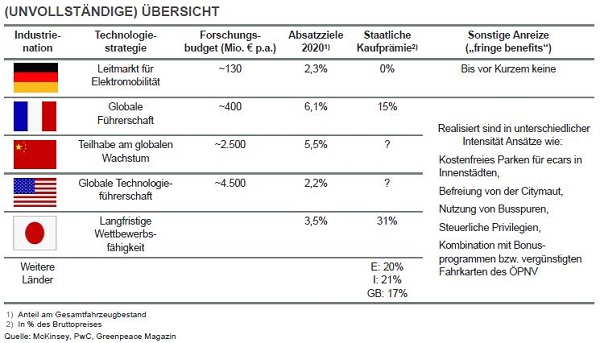Electric mobility – What is the future of local public transport?
The debate about the future of public transport is placing an increasing focus on aspects of electric mobility. The resulting strategic challenges and issues for local public transport enterprises are examined by Dr. Knut Petersen and Oliver Drümmer in their contribution to the latest edition of Nahverkehrspraxis entitled “Elektromobilität – Quo vadis ÖPNV?” (“Electric mobility – What is the future of local public transport?”. A number of points from this article are set out below, and at the end you will find a link for downloading the entire article.
In view of identifiable trends such as a steadily growing need for mobility, a shift of values away from an “automobile society” to a “mobility society”, and a marked growth in the development of environmental awareness, we can expect electric mobility to remain a lasting issue. Against this background, and bearing in mind the importance of the automobile industry for the German economy, the German government’s climate policy objectives and the substantial efforts being made by other nations, political support for electric mobility is gradually gaining ground in Germany (see Fig. 1). However, media presence is dominated by e-cars, in other words by e-mobility for and with cars.

Local public transport in Germany will not remain unaffected by these developments. The sector will be affected in many ways – and signs of this can already be seen at a variety of levels:
ÞLoss of green image: With a systematic broadening of the spectrum of electric cars available, public transport companies run the risk of losing a competitive advantage that they have enjoyed to date: that of being “especially green / environmental”.
ÞDirect competition: This could give rise to serious repercussions on the demand side, resulting from a decline in passenger numbers and an intensification of motorised individual traffic (“Never again a bus or train!”)
ÞNew providers in the mobility market: The various activities of different industries (energy suppliers, car makers, electrical industry, car rental firms) are giving rise to new mobility providers and consortia, who could themselves develop an interest in various mobility requirements currently dominated by local public transport systems, design completely new mobility offerings and erode the classic local public transport sector or degrade it to a last resort.
ÞCompetition for subsidies: Achieving the German government’s objectives in the field of electric mobility also calls for substantial investment – and such resources may no longer be available to the local public transport sector.
In May 2011 the VDV (Federation of German Public Transport Companies) took action to address these risks and redress the one-sidedness of the discussion by proclaiming the leading role of public transport in the development of electric mobility. There are good reasons for doubting whether this claim is realistic. For one thing, the “local public transport sector” is a heterogeneous collection of many different actors, often with widely differing interests. For another, electric mobility is a global issue of industrial policy in which much is at stake for the industry. It seems doubtful that such enterprises (which frequently have totally different opportunities for innovation) will “submit” to leadership by the public transport sector.
What is more, public transport companies have hitherto focused strongly on testing technical concepts for electric mobility (from hybrid drives through hydrogen systems to straight battery-based concepts), and less on holistic strategic solutions for their companies in this new context. To date, little attention has been devoted to conceptual ideas which are aimed at dovetailing mobility offerings and creating novel mobility chains for the user, and which are based on specific regional solutions with new sustainable business models. Moreover, there does not appear to be much coordination of approaches – each company is concerned with its own “experiment”. Sharing of information appears sporadic and confined to individual networks.
Forward-looking answers to these challenges could be provided by networks and partnerships with strong synergies. “The local public transport system” could certainly play an important role with innovative concepts if it made a concrete contribution by putting its potential into integrative concepts with industrial partners. After all, industrial e-mobility actors too will be dependent on strategic partnerships in which the public transport representatives can set important trends.
To find out which local public transport companies appear to be predestined for strategic partnerships, read the complete article from Nahverkehrspraxis:
►►►Download
If you are interested in more information on electric mobility and local public transport, please contact
►►►Dr. Knut Petersen (E-Mail: k.petersen@bsl-transportation.com) or
►►►Oliver Drümmer (E-Mail: o.druemmer@bsl-transportation.com).
05. February 2012